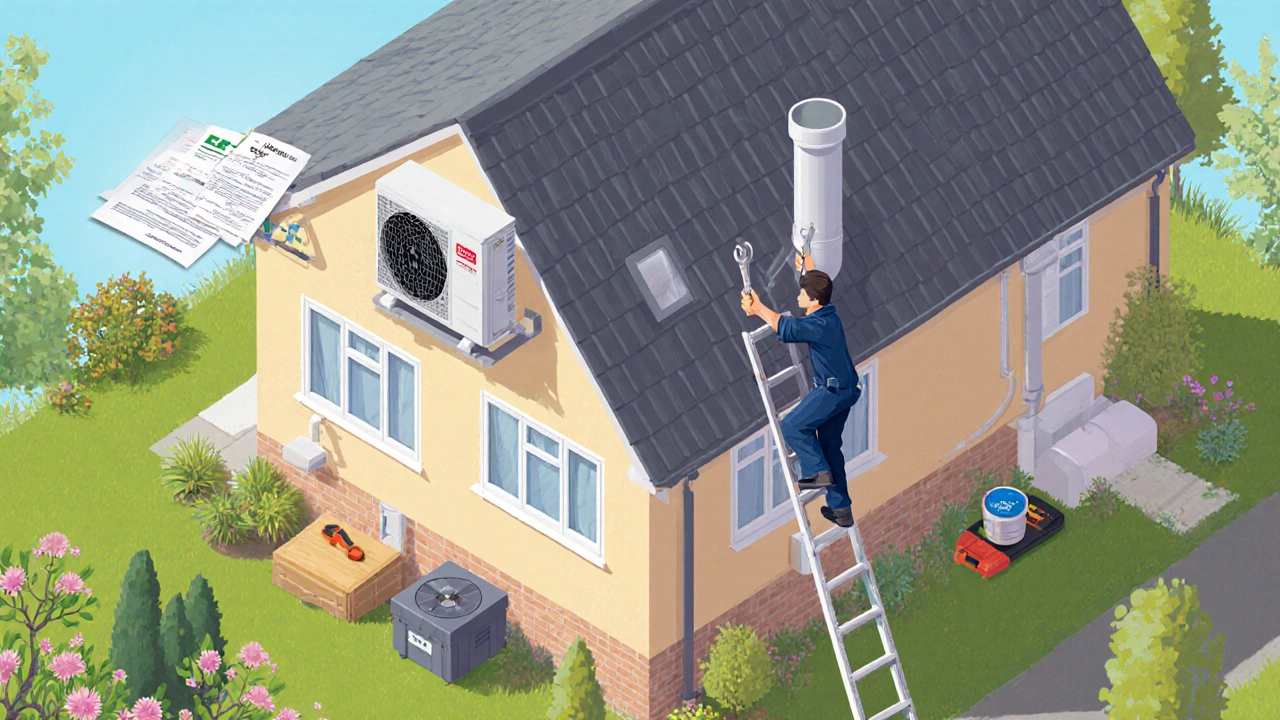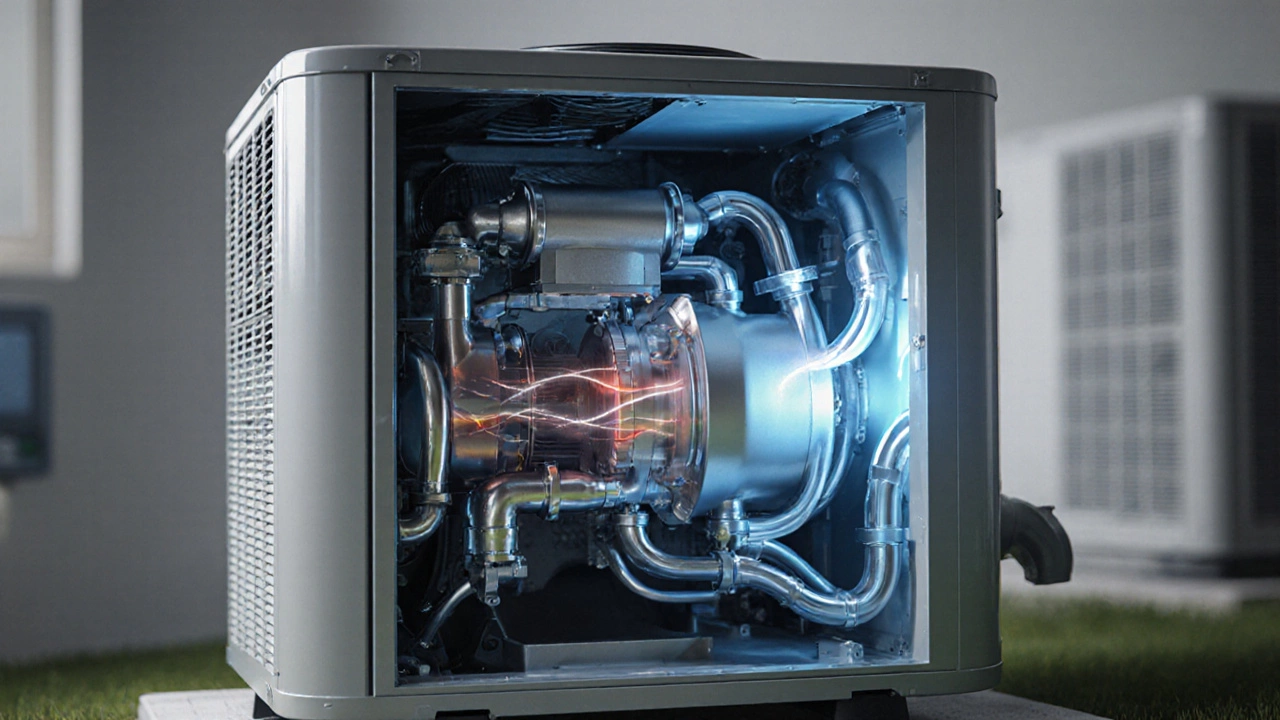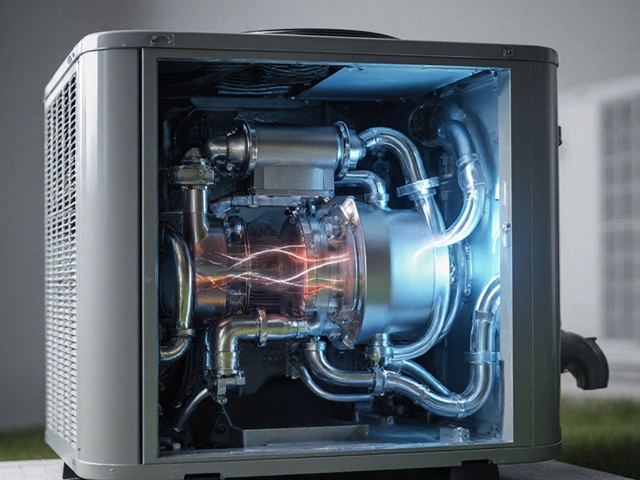Heat Pump Compressor Cost Estimator
When your heat pump stops heating or cooling, the culprit is often the compressor, the heart of the system that pressurises the refrigerant. Knowing the heat pump compressor cost before you call a technician can save you from surprise invoices and help you plan the repair wisely.
Quick Takeaways
- Average 2025 replacement price in the UK ranges from £850 to £2,200, parts plus labour.
- Brand, system capacity (kW), and refrigerant type are the biggest cost drivers.
- Get at least three quotes and ask for a detailed labour breakdown.
- Professional installation is usually required for warranty compliance.
- Most manufacturers offer 5‑year parts warranties on new compressors.
Understanding the Compressor’s Role
The compressor is the component that raises the pressure and temperature of the refrigerant, enabling the heat pump to move heat from outdoors to indoors (or the reverse). Without it, the system cannot complete the refrigeration cycle, leaving you with no heating in winter or cooling in summer.
The heat pump is a reverse‑cycle air‑conditioning system that extracts heat from one environment and releases it into another relies on the compressor to keep the refrigerant flowing at the right pressures. When the compressor fails, the whole cycle stalls.
What Drives the Price?
Several variables push the final bill up or down. Here’s a quick rundown of the most influential factors:
- Brand and model: Premium brands (Mitsubishi Electric, Daikin, Bosch) command higher part prices than generic OEM units.
- System capacity: A 5kW unit for a medium‑size home uses a larger compressor than a 2kW appliance for a small flat, and the price scales roughly with capacity.
- Refrigerant type: Newer systems run on R‑32 or R‑410A, which require specialised compressors and can add £150‑£300 to the part cost.
- Location and access: If the outdoor condenser sits on a roof or behind a tight fence, labour time can increase by 1‑2hours.
- Labour rates: In the UK, certified HVAC technicians charge between £70 and £110 per hour. Some firms bundle labour and disposal into a single fee.
- Warranty status: A compressor still under manufacturer warranty may be replaced free of charge, but you’ll usually need a certified HVAC technician to perform the work.

Typical Cost Breakdown (2025)
| Brand / Model | Capacity (kW) | Compressor (part) £ | Labour £ | Total Approx. £ |
|---|---|---|---|---|
| Mitsubishi Electric Ecodan | 5 | 1200‑1400 | 350‑450 | 1600‑1850 |
| Daikin Altherma | 4 | 1050‑1250 | 300‑400 | 1400‑1650 |
| Bosch Compress | 3 | 900‑1100 | 300‑380 | 1250‑1480 |
| Generic OEM | 2‑5 | 650‑950 | 280‑360 | 950‑1310 |
These figures include the cost of the new compressor, disposal of the old unit, and standard labour. Additional expenses-such as refrigerant reclaim, system flushing, or extended warranty upgrades-can add £100‑£250.
How to Get an Accurate Quote
- Gather the model number found on the indoor unit’s data plate and the current SEER rating (Seasonal Energy Efficiency Ratio) of your system.
- Note the refrigerant type - look for R‑32, R‑410A, or older R‑22 markings.
- Contact at least three local HVAC service firms. Ask each to break down the quote into part cost, labour hours, and any ancillary charges.
- Request confirmation that the quoted labour includes disposal of the old compressor and a system recharge with the correct refrigerant.
- Verify that the installer is a certified HVAC technician and that they will provide a written warranty receipt.
Doing this legwork usually trims the final price by 5‑15% because firms compete on labour efficiency as well as parts.
DIY vs Professional Installation
While swapping a faulty compressor might look like a standard DIY job, there are a few hard‑rules you should follow:
- Legal compliance: In the UK, the installation of refrigerant‑charged equipment is regulated by the Environmental Permitting Regulations. Only a qualified technician may handle refrigerant recovery and recharge.
- Warranty validity: Most manufacturers void the compressor warranty if the replacement isn’t performed by an authorized installer.
- Safety: Compressors operate under high pressure; a mistake can cause injury or damage to other components.
If you’re determined to help, you can aid the process by clearing the outdoor unit’s surroundings, providing easy access, and ordering the correct replacement part yourself. Still, plan on paying a professional for the actual fit‑and‑finish, which will likely cost £300‑£450 in labour.

Warranty and Longevity Considerations
New compressors typically come with a 5‑year parts warranty, but the duration can vary:
- Manufacturer warranty: Brands like Daikin and Mitsubishi often offer a 5‑year warranty when installed by an approved dealer.
- Extended service contracts: Some local firms sell add‑on coverage for an extra £100‑£200 per year, covering labour on future failures.
- Maintenance impact: Regular system cleaning, annual refrigerant checks, and keeping the outdoor coil clear can extend compressor life by 2‑3years.
Keeping the warranty paperwork and a copy of the installation receipt is essential. If the compressor fails within the warranty window, you’ll be eligible for a free part replacement, but you’ll still need to cover labour unless the service contract includes it.
Next Steps and Common Pitfalls
Now that you understand the cost drivers, here’s a concise action plan:
- Locate your heat pump’s model and SEER rating.
- Check the warranty status on the original compressor.
- Request three detailed quotes from certified HVAC technicians.
- Choose the quote that offers the best balance of price, brand reputation, and warranty coverage.
- Schedule the installation, ensuring the technician disposes of the old unit and recharges the refrigerant correctly.
- Keep all receipts and warranty documents for future reference.
Common mistakes to avoid include:
- Skipping the refrigerant reclaim step - illegal and can damage the new compressor.
- Choosing the cheapest generic compressor without checking compatibility - may lead to reduced efficiency or early failure.
- Neglecting to test the system after installation - a proper performance test should show the expected COP (Coefficient of Performance) for your climate zone.
By following these steps, you’ll keep your heat pump humming efficiently and avoid unexpected repair bills.
Frequently Asked Questions
How long does a heat pump compressor usually last?
With regular maintenance, a compressor can operate for 12‑15years. In harsh climates or if the system is oversized, the lifespan may drop to 8‑10years.
Can I replace the compressor myself to save money?
You can order the part and clear the installation area, but handling refrigerant and ensuring warranty compliance requires a certified HVAC technician. Attempting a full DIY swap risks legal penalties and voided warranties.
What is the difference between SEER and COP?
SEER (Seasonal Energy Efficiency Ratio) measures cooling efficiency in British thermal units per watt‑hour. COP (Coefficient of Performance) measures heating efficiency as a ratio of heat output to electrical input. Both help gauge how efficiently the compressor runs.
Do I need to replace the refrigerant when I change the compressor?
Yes. The system must be evacuated, the old refrigerant recovered, and the correct type (e.g., R‑32 or R‑410A) added at the manufacturer‑specified charge level.
How can I reduce the total cost of a compressor replacement?
Shop around for part prices, schedule the job during off‑peak seasons (spring or autumn), and bundle the replacement with a routine service visit to get a discounted labour rate.




